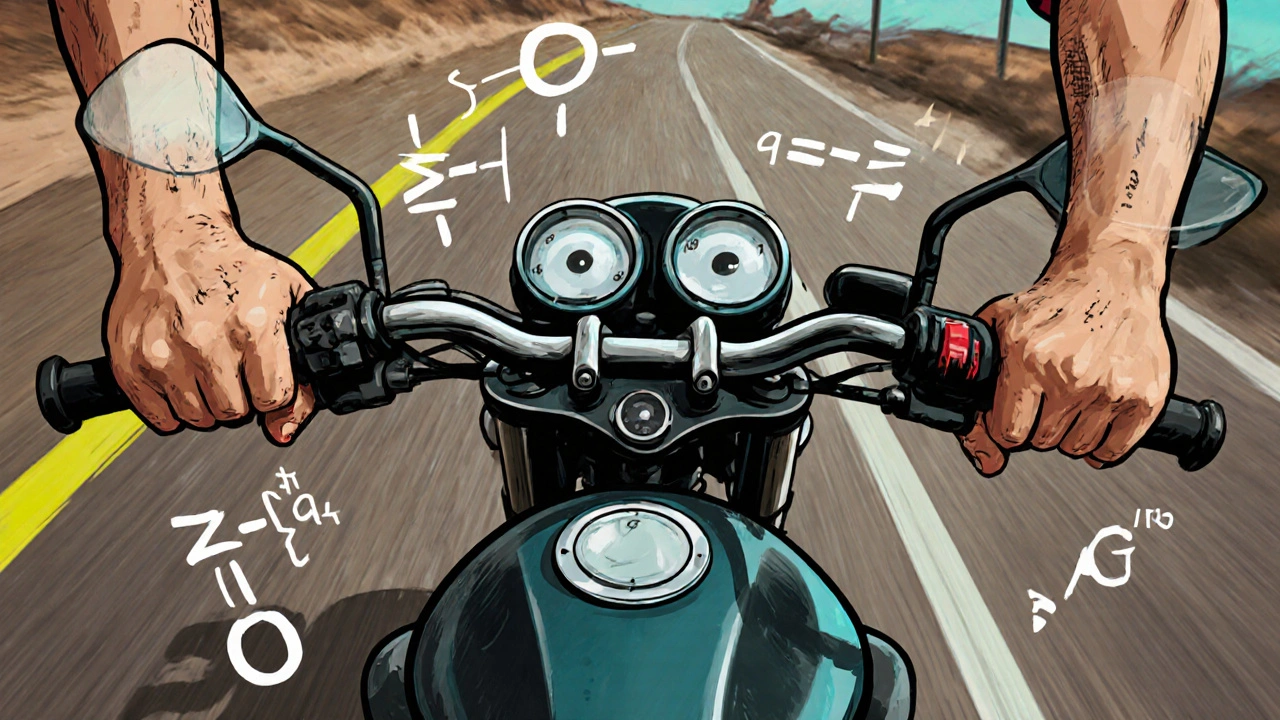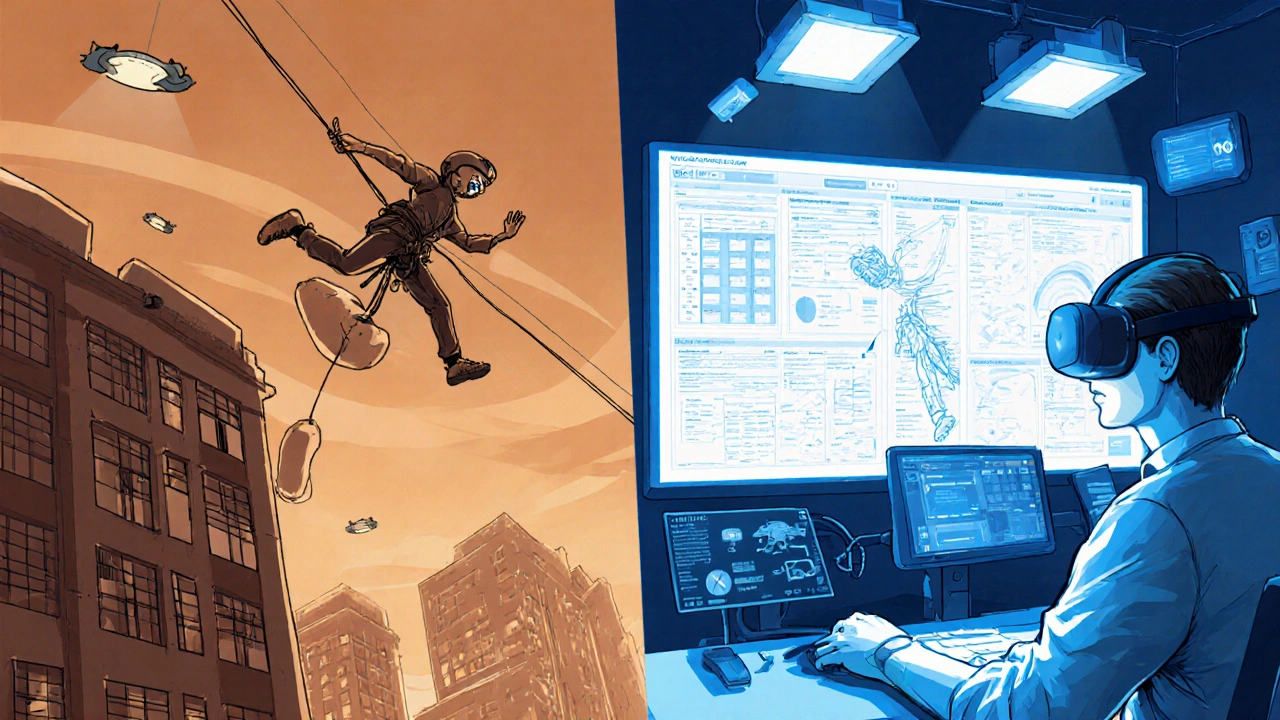What a Stunt Coordinator Actually Does
A stunt coordinator isn’t just the person who tells actors to jump off buildings. They’re the ones who make sure that jump doesn’t kill them. Every time you see a car flip mid-air, a fighter launched through a window, or a hero dangling from a helicopter, there’s a stunt coordinator behind it-designing the move, testing the safety, and making sure it looks real without being reckless. This job didn’t exist in silent films, but by the 1960s, after too many serious injuries on set, Hollywood had to formalize the role. Today, if a film involves anything beyond basic falls or punches, SAG-AFTRA requires a certified stunt coordinator on set. Their job isn’t to stop the action-it’s to control it.
The Hidden Math Behind the Mayhem
Stunt design isn’t guesswork. It’s physics, timing, and precision. A 20-foot fall? That’s 1.1 seconds of airtime. To land safely, crash mats must be placed within 6 inches of the exact landing spot. Too far? The performer hits the ground harder. Too close? The mat gets in the way of the camera. Coordinators calculate these numbers before a single stunt is rehearsed. For a car flip, they decide how many hydraulic rams are needed, at what pressure (often 3,500 psi), and how fast they must fire (down to 0.2 seconds). Fire stunts? The suit must withstand 1,800°F for at least 15 seconds. These aren’t suggestions-they’re non-negotiable specs written into safety documents that run 25 to 40 pages long per sequence.
Casting the Right Body for the Job
It’s not enough that a stunt performer is strong or brave. They have to look like the actor they’re doubling. If the lead actor is 5’10” and 170 pounds, the stunt double needs to be within 85-90% of that. Height, build, even hair color matter. But it’s more than appearance. One stunt might require someone who can hold their breath underwater for 90 seconds. Another needs a driver who’s done 360-degree motorcycle spins on asphalt. Coordinators maintain lists of 50-75 trusted performers, each with a specific skill set. They don’t just pick the strongest person-they pick the one who’s done this exact stunt before, under similar conditions, and survived it cleanly.

Safety Isn’t a Checklist-It’s a Culture
Some directors think safety slows things down. But the numbers don’t lie. Productions with certified coordinators had 78% fewer major injuries, especially in high falls and vehicle stunts. A coordinator’s first question before any stunt isn’t ‘How cool does this look?’ It’s ‘What are the 15 ways this could go wrong?’ They run multiple safety briefings-not just one at the start of the day, but mini-briefings right before each take. Conditions change. Wind picks up. The mat shifts. The rigging loosens. A good coordinator adjusts on the fly. One stunt performer on Reddit said the best coordinators don’t just tell you what to do-they tell you what not to do. That specificity cuts rehearsal time by nearly 40%. When you know exactly where the danger is, you avoid it.
The Fight Between Realism and Risk
Not everyone agrees on how safe a stunt should be. Director Christopher McQuarrie once said too much caution can ‘sanitize’ the action. Audiences want to feel the danger. They want to see real sweat, real impact, real consequences. But that doesn’t mean cutting corners. The best coordinators solve this by being creative. Instead of letting a performer fall from a real building, they might use a controlled drop with hidden wires and airbags. The camera angle hides the safety gear, and the fall still looks terrifying. It’s not about avoiding danger-it’s about managing it so the audience never sees the safety net. That’s the art. And according to Stunt World Magazine’s 2022 rankings, the top coordinators are judged not on how many stunts they do, but how well they push limits within safety.

How You Become a Stunt Coordinator
You don’t apply for this job. You earn it. 92% of current coordinators started as stunt performers. That means years of taking falls, driving wrecked cars, and getting hit with rubber knives. It takes 7 to 12 years of doing the stunts before you’re ready to run them. Along the way, you learn the industry’s hidden rules: who to trust, who to avoid, and where to find the next gig. You need certifications-SAG-AFTRA’s 120-hour training program, First Aid, CPR, and specialized licenses for aerial or underwater work. But the real education happens on set. Most spend 3 to 5 years as an assistant coordinator, shadowing the boss, handling paperwork, and learning how to manage chaos. The job now involves 20-30 hours a week of documentation: insurance forms, safety reports, compliance logs. That’s more paperwork than in the early 2000s. But it’s what keeps people alive.
Technology Is Changing the Game
CGI is everywhere, but practical stunts aren’t dying-they’re evolving. Motion capture is now used in 40% of stunt pre-visualizations. Coordinators can simulate a 50-foot drop in VR before ever stepping on a rig. Drones are now mandatory for monitoring high falls above 30 feet, giving real-time feedback on wind speed and landing accuracy. But the biggest shift coming? The hybrid stunt coordinator-the person who can work both on set and in a digital studio. Training programs are already starting to teach this new skill. Still, as the National Film Institute puts it: ‘No amount of CGI can replace the human element of genuine physical risk management.’ Audiences still crave the real thing. That’s why vehicular stunts and hand-to-hand fight choreography are growing at 9% and 6% annually, respectively. People want to believe it’s real. And only a stunt coordinator can make sure it is.
Where the Work Is-and Where It’s Going
The global stunt coordination market hit $387 million in 2022 and is growing 5.2% a year. Netflix alone hired 287 coordinators across 47 action projects in 2023-that’s up 63% since 2020. Most jobs are in California (42%), New York (18%), and Georgia (15%), where tax incentives draw big productions. But there’s a warning: by 2028, 15-20% of stunts-especially high falls and wire work-could be replaced by digital effects. The survivors? The ones who do things machines can’t replicate: real car chases, actual explosions, physical fights where bodies collide in ways CGI still can’t fully fake. The future belongs to coordinators who can blend old-school grit with new-school tech. Not because they’re afraid of CGI-but because they know what audiences still feel when they see a real person take a real fall.

